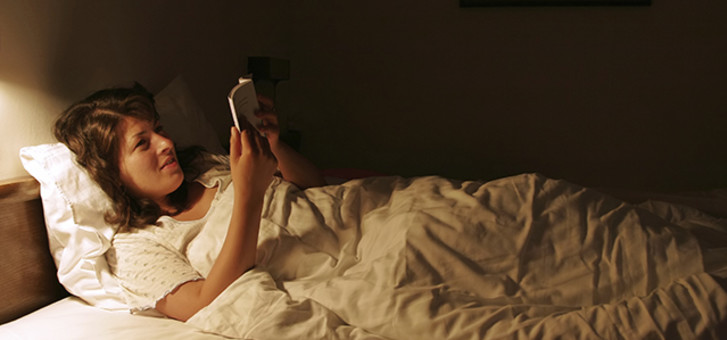The movie Fifty Shades of Grey is scheduled for release this month. It is based on an erotic romance novel of the same name that was published in 2011. The novel topped bestseller lists around the world and is the fastest selling paperback since records began. It is notable for its explicit erotic scenes featuring elements of sexual practices involving bondage and discipline, and sadomasochism (BDSM).
The American Psychiatric Association, in the fifth and most recent edition of its “bible,” the Diagnostic and Statistical Manual of Mental Disorders, lists and describes the practices of BDSM as “disorders,” meaning that they are not normal and what the majority of the public practices.
Specifically the manual says, “These disorders . . . are relatively common, in relation to other paraphilic [becoming sexually aroused by people or things that are unable to return affection] disorders, and some of them entail actions for their satisfaction that, because of their noxiousness or potential harm to others, are classed as criminal offences . . .”
What couples say
As a recovering sex and pornography addict certified both in the diagnosis and treatment of sexual and pornography addictions, it is clear to me that Fifty Shades of Grey—and any spin-offs—are extremely dangerous in how they deal with the topics of sexuality, self-esteem, love, romance and relationships.
Many people tend to get angry and upset because they feel that I’m being judgemental toward others. However, the reality is that in my many years of counselling, I have yet to meet with a married couple for the complaint that they are having “normal” sex. On the contrary, sadly, I have met with many couples where one or both are distressed and anxiously report something to the effect that “I hate the fact that he likes and wants to hurt me and put me down . . . I thought that marriage and sex was about seeking to meet the other person’s needs, not their own” or “she tells me that I have to choke, strike or demean her in some way while we have sex . . . and I love her—I don’t want to do that!”
After completing a comprehensive evaluation of my clients, I inevitably find that there was trauma in that person’s past; and it was specifically that that diverted their normal sexual development and set their sexual template, as it were, to BDSM behaviours as their “default.”
What others say
It’s not just me who feels this way about this book; a lot of people—non-Christians even—feel it’s pretty dangerous stuff!
Crime writer Kathyrn Casey, in the appropriately titled article, “Is ‘Fifty Shades of Grey’ Dangerous?”, published on forbes.com, writes, “Isn’t it dangerous to turn a BDSM-addict into a romantic hero? Would we want our daughters dating Christian Grey? . . . What I find unsettling is that in Christian Grey I see the attributes of so many of the men I’ve written about over the years, the ones who abuse and sometimes even end up murdering their intimate partners. . . . What I’ve seen over and over again is that a man who needs to dominate, humiliate and physically abuse a woman isn’t a hero. He’s not doing it out of love. That guy isn’t the man of any woman’s dreams. He’s a mistake, one she won’t end up rehabilitating but fleeing. . . . And I wonder what it says about our society that these books are so incredibly successful . . . ”
Writer, theatre critic and self-proclaimed feminist, Carey Purcell, wrote this on her blog: “I feel the need to share my opinions about what I consider to be the incredibly—and dangerously—abusive relationship portrayed in the books. . . . The control he exercises over her does not reflect his love for her; it reflects his objectifying of her. Christian never views Anastasia as a person . . . Anastasia and Christian’s relationship is not romantic. It is abusive.”
And then there’s Terrence McCoy, who in his story for the Washington Post reports that “A new study published . . . in the Journal of Women’s Health says young women who have read the book [Fifty Shades of Grey] . . . with themes related to sexual dominance—are more likely to have abusive partners, use diet aids, binge drink and have multiple sexual partners.”
What the Bible says
Pastor and founder of the popular website “GotQuestions.com,” S Michael Houdmann, writes, “Beyond adultery . . . and pornography, which the Bible clearly and explicitly identifies as sin, a good principle seems to be the ‘mutual consent’ mentioned in 1 Corinthians 7:5. If a husband and his wife are in full agreement, with neither being forced or coerced, God has given married couples freedom in regards to what takes place in the ‘marriage bed.’ ”
However I have found that many spouses—out of feelings of frustration or fear that their spouse will seek sexual satisfaction elsewhere—will reluctantly agree to their involvement in BDSM behaviours.
The apostle Paul, in his treatise on what constitutes love (see 1 Corinthians 13:4–8), lists many traits; I want to focus on the ones that in my opinion are relevant to this discussion: “kind;” “does not dishonour others;” “not self-seeking;” “does not delight in evil;” “always protects.” Are any of these in harmony with the practices of BDSM? I don’t think so.
God designed sex to be an expression of love, affection, passion, gentleness, selflessness and commitment between one man and one woman—for life. To bring pain, degradation, humiliation or to have the need to dominate or force those we say we “love” into a sexual relationship distorts God’s original intentions.
Furthermore, the need to dominate or be dominated—in any kind of relationship—reveals an emotionally dysfunctional and damaged perspective. These needs and desires are spiritually unhealthy and show a warped perspective on what that individual perceives as truth or reality (see Romans 1:18–32; Galatians 5:19–21).
What do we say
The practices that the movie (and the book) Fifty Shades of Grey promote are downright shady! They romanticise a relationship that is unhealthy, dysfunctional and dangerous. But knowing that BDSM practices are not God’s ideal is not enough if no change is affected in our choices, so what’s the next step?
Peter, an early Christian leader, writing to Christians long ago, told them, “Do not live the rest of [your] earthly lives for evil human desires, but rather for the will of God” (1 Peter 4:2). And Paul, a leader in the early Christian church, also counselled a group of Christians struggling to discern right choices in a culture of sinful, sensual practices that they needed to stop living as though they were in the dark—they needed to live as children of the light (Ephesians 5:3–14).
As the Bible suggests, let us choose to be the kind of people who show positive characteristics (Galatians 5:22) and set our minds and hearts—not on ingesting media that is full of pain, coercion and selfishness but instead—on themes of purity, love, beauty, peace and unselfishness (Philippians 4:8).






